Rivers are vital for our ecosystem. They provide drinking water, irrigation, and industry; they support plants and animals and help regulate the Earth’s climate. However, rivers are under threat from climate change and human activity. Let’s explore 10 rivers that are running dry in 2024 and could be entirely out of water within the next few decades.
1. The Colorado River
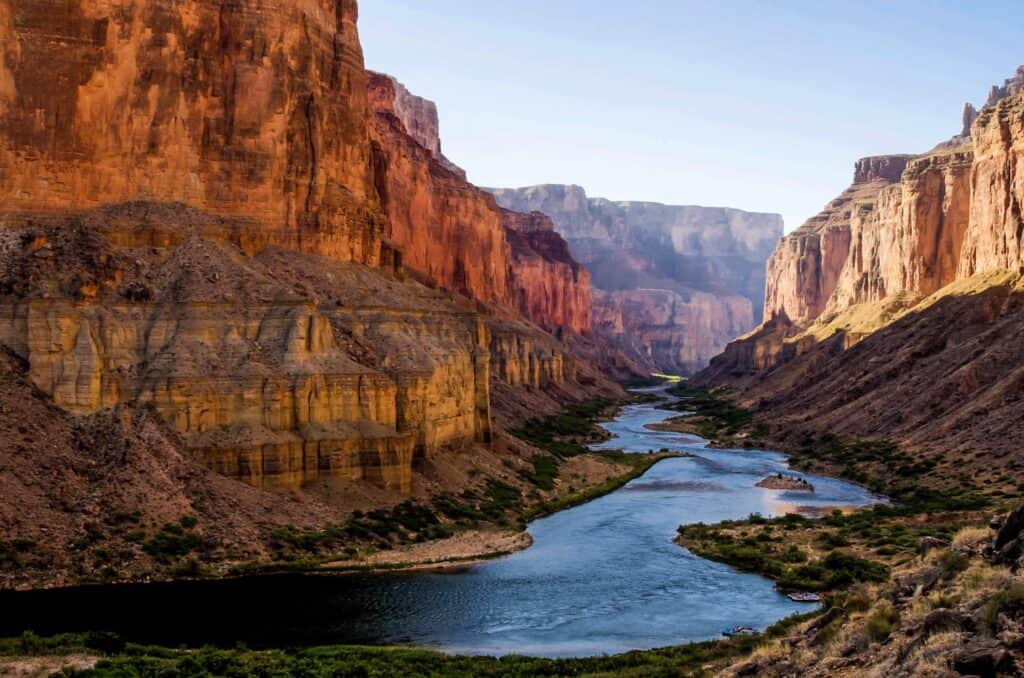
The iconic Colorado River is running at historically low levels.
©Beth Ruggiero-York/Shutterstock.com
A huge water source for the southwestern United States is the Colorado River. Unfortunately, as a result of climate change and the high demand for its water, the Colorado River is running dry at a rapid and unsustainable rate.
The Colorado River Basin is home to some of the fastest-growing populations and economies in the United States. The river provides water for more than 40 million people and is a critical source of water for agriculture.
The river has been dammed and diverted for irrigation, hydropower, and domestic use, leaving less water to flow downstream. As a result, the river has experienced more frequent and more prolonged droughts in the last decade. As a result, reservoir levels have dropped, and water shortages have become more common.
This 1,450-mile-long river is also one of the most heavily regulated rivers in the world. In 1922, the United States and Mexico signed the Colorado River Compact to allocate the river’s water between the two countries. The Compact divides the river basin into the Upper Division and the Lower Division to regulate how much water usage happens in each region.
The Colorado River is also subject to the Law of the River, a set of regulations that govern river usage. The Law of the River protects the river and its resources.
There are several possible solutions to address the Colorado River’s dwindling water supply.
- One solution is to increase water efficiency through better irrigation practices and water conservation.
- Another solution is to change the water allocation under the Colorado River Compact. It would require the agreement of all the Compact’s signatories, which include the seven US states in the Colorado River Basin. Those states are Arizona, California, Colorado, New Mexico, Nevada, Utah, and Wyoming.
- A third solution is to increase the amount of water in the Colorado River through new sources, such as desalination, recycled water, and groundwater.
The Colorado River running dry would cause severe consequences for the region’s economy and ecology.
2. The Rio Grande River
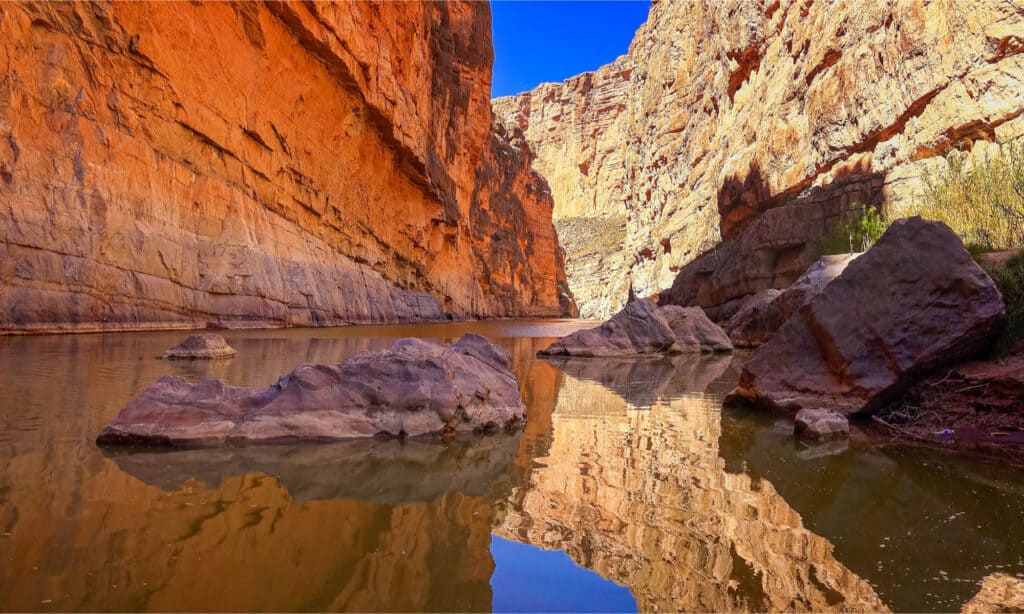
A significant water source for the American Southwest and Mexico is the Rio Grande River.
©CrackerClips Stock Media/Shutterstock.com
The Rio Grande River is an essential water source for the southwestern United States and Mexico. Still, prolonged drought and increased demand have left the river parched. The lack of water in the Rio Grande is having devastating effects on local ecosystems and wildlife, and the situation is only getting worse as the drought continues.
For example, in the summer of 2022, the Rio Grande at Albuquerque ran out of water for the first time in four decades. This section of the river runs for 100 miles and supplies area residents with water for drinking, irrigation, and industry.
The Rio Grande is also a critical habitat for many fish, birds, and other wildlife species. And is one of the only sources of water for New Mexico’s endangered species, including the Rio Grande silvery minnow and the Mexican gray wolf. Without enough water in the river, these and other species risk extinction. In addition, when the river runs dry, these animals are left without a home and are forced to find food and shelter elsewhere.
The causes of the Rio Grande’s water woes are numerous. Climate change has contributed to the drought, as has the overuse of water resources and the loss of vegetation along the river. The prolonged drought that began in the early 2000s has left the Rio Grande River severely depleted. Low snowpack in the Rockies, combined with high temperatures and low rainfall, has reduced the river’s flow to a fraction of what it used to be. The effects of the drought span throughout the Rio Grande Basin.
This Rio Grande River originates in the Rocky Mountains of Colorado. It flows for over 1,900 miles through New Mexico, Texas, and Mexico before emptying into the Gulf of Mexico.
In the United States, the Rio Grande provides irrigation water for nearly one million acres of farmland and supplies drinking water to over five million people.
The river is a significant water source for Mexico’s agriculture and industry. In addition, it provides drinking water for over three million people.
3. The Indus River
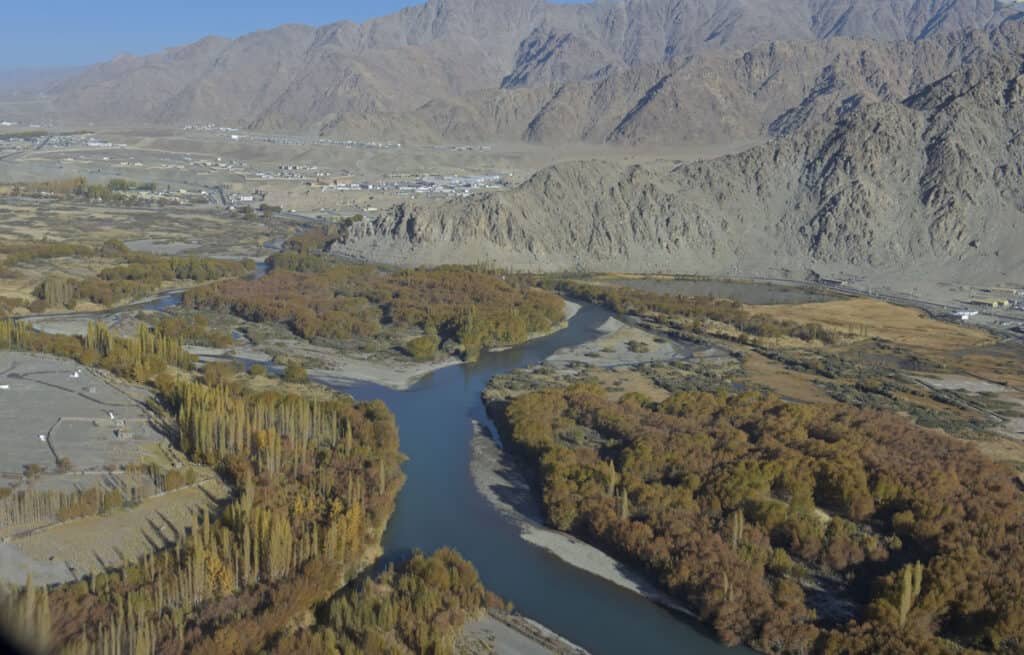
The mighty Indus River is the longest river in Pakistan and one of the largest rivers in the world.
©iStock.com/Naresh Sharma
The Indus River — one of the 50 largest rivers in the world — is in danger of running dry from drought conditions and overuse. This Asian river is the lifeline for millions of people in Pakistan and India and provides water for irrigation. It is also a source of hydropower and provides water for the Indus Basin Irrigation System, the most extensive irrigation system worldwide.
The Indus River runs a total of 3180 km (1976 miles) and is the longest river in Pakistan. The river originates in the Tibetan Plateau in China. It flows through the Indian-administered state of Jammu and Kashmir before entering Pakistan.
The river has been experiencing below-average rainfall for the past few years and is the driest its been in 60 years. In Pakistan, the river flow has decreased by more than 50%. This decrease has led to water shortages and increased competition for water resources.
The Indus River is an essential part of the Pakistani economy, and the country is heavily dependent on the river. The decrease in river flow has harmed Pakistan’s economy, and the country is struggling to cope with the situation. The Pakistani government has declared a national emergency over the water crisis. However, it is working on a plan to address the issue.
4. The Teesta River
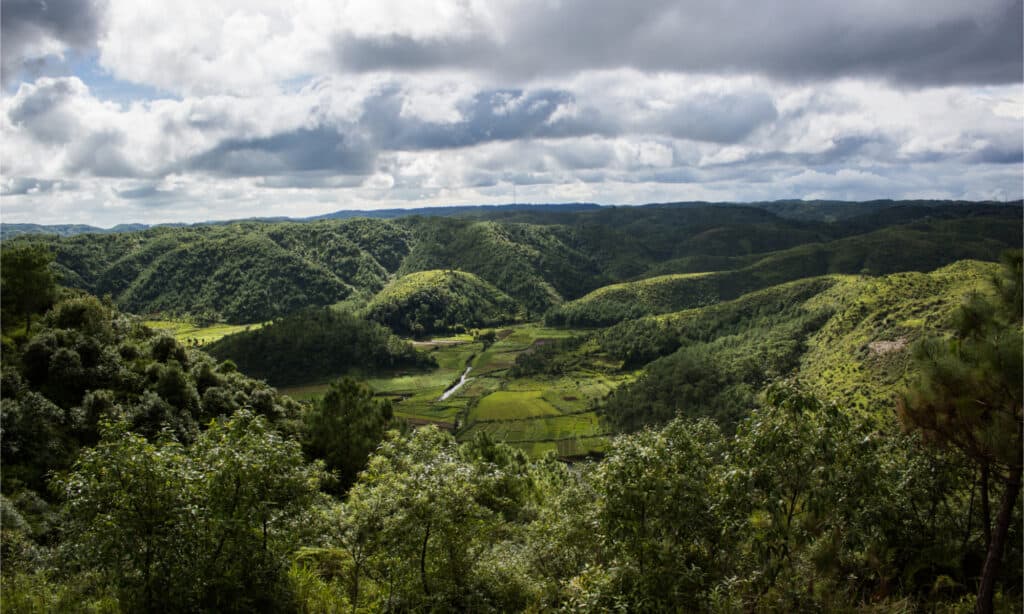
India’s ecosystem depends on water from the Teesta River.
©UniS/Shutterstock.com
The water flow of the Teesta River in India and Bangladesh is running dry for many reasons. Firstly, the Zemu glacier, the primary water source for the river, is melting at an alarming rate due to global warming. Secondly, the region’s rainfall has decreased significantly in recent years. This decrease has led to less water being available for the river. Thirdly, and the most problematic, there has been a high increase in the amount of water withdrawn from the river for irrigation, electricity, and other purposes. This practice has put a strain on the river and has contributed to its decline.
The Teesta River is 414 kilometers (257 miles) long and is one of the most important rivers in this region. It is the main source of water for agriculture and hydroelectric power and provides drinking water for millions of people. The decline of the river has had a devastating impact on the lives of people who depend on it. Ongoing disputes and negotiations about how to resolve Teesta’s water flow issues will hopefully result in sustainable river usage between India and Bangladesh.
5. The Arkansas River

Water flow in the Arkansas River is decreasing due to severe drought and overuse.
©iStock.com/Michael Dean Shelton
The Arkansas River is an important tributary of the Mississippi River in the United States that is running dry due to various factors. Areas along this 1,469-mile (2,364-kilometer) river are experiencing moderate to severe drought. Plus, there’s an increased demand for water from industries and municipalities in the states surrounding it. This demand has caused water levels to decrease significantly in recent years, leaving the river unable to meet the needs of everybody who depends on it.
Arkansas, Colorado, Kansas, and Oklahoma rely heavily on the Arkansas River for transportation, irrigation, industry, and recreation. As a result, the decreased flow of the Arkansas River has significantly impacted the region’s environment and economy.
Wildlife and vegetation along the river are suffering due to the lower water levels. And, industries that rely on the river for transportation or power generation must make changes to continue operating.
6. The Red River

New Mexico depends on water from the Red River of the South.
©Sean Pavone/Shutterstock.com
Also known as the Red River of the South, the Red River flows through the southern portion of the Great Plains in the U.S. The Red River is running dry due to a number of factors, including climate change and overuse of the river’s water resources.
The Red River is just under 3,000 miles long and runs through New Mexico, Texas, Oklahoma, Arkansas, and Louisiana. It’s also an important water source for Native American nations in this region, including Chocktaw and Chickasaw Tribes. Unfortunately, western areas of the Red River Basin seem particularly susceptible to the effects of drought and decreased water flow.
The Red River provides water for agriculture, industry, and municipal uses. In addition, the river is a popular recreation spot for fishing, swimming, and boating. The dry river will have a significant impact on all of these activities.
7. The Murray River
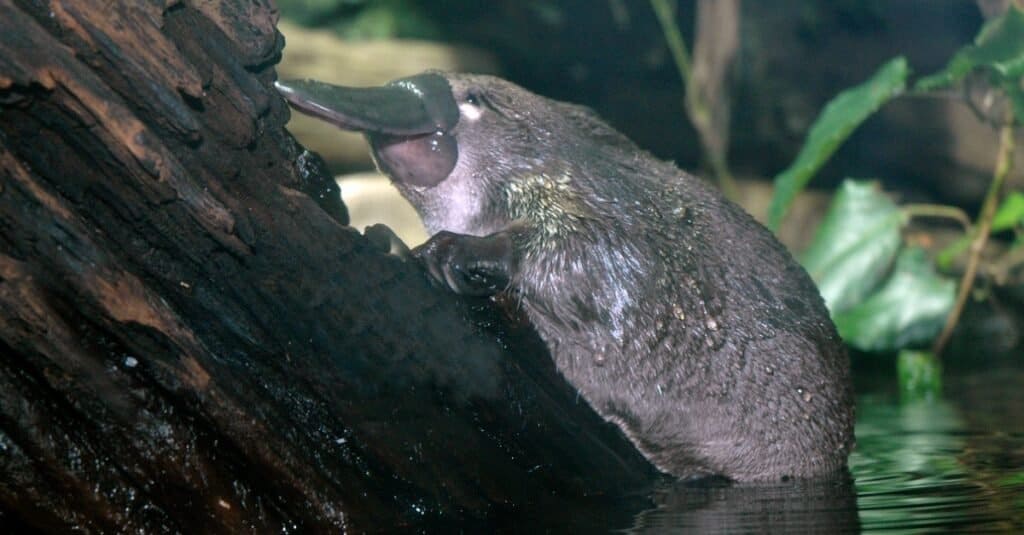
Platypus
and other wildlife live in Australia’s Murray-Darling Basin.
©iStock.com/Michel VIARD
As the largest river in Australia (2,508 km), the Murray River is one of the country’s most important water sources. Despite this, the river is running dry. This water flow decrease occurs when insufficient rainfall replenishes the river’s water levels. When this happens, some areas of the Murray-Darling Basin become a series of stagnant pools. Low water levels cause devastating consequences for the local ecosystem and the human communities that rely on the river for water.
The Murray River ran dry in 2006 when relentless drought conditions affecting much of Australia led to low rainfall levels across the country. Drought caused the river’s water levels to drop significantly, and by 2007, the river had stopped flowing altogether. The dry conditions also resulted in dust storms and wildfires in the Murray-Darling Basin, the area of land draining into the river.
In 2022, the Murray-Darling Basin is in grave danger of drying up for good. Long-lasting drought, growing industries, rising irrigation needs, and building more locks and dams have all contributed to the decrease in Murray River’s water flow.
8. The Amu Darya River
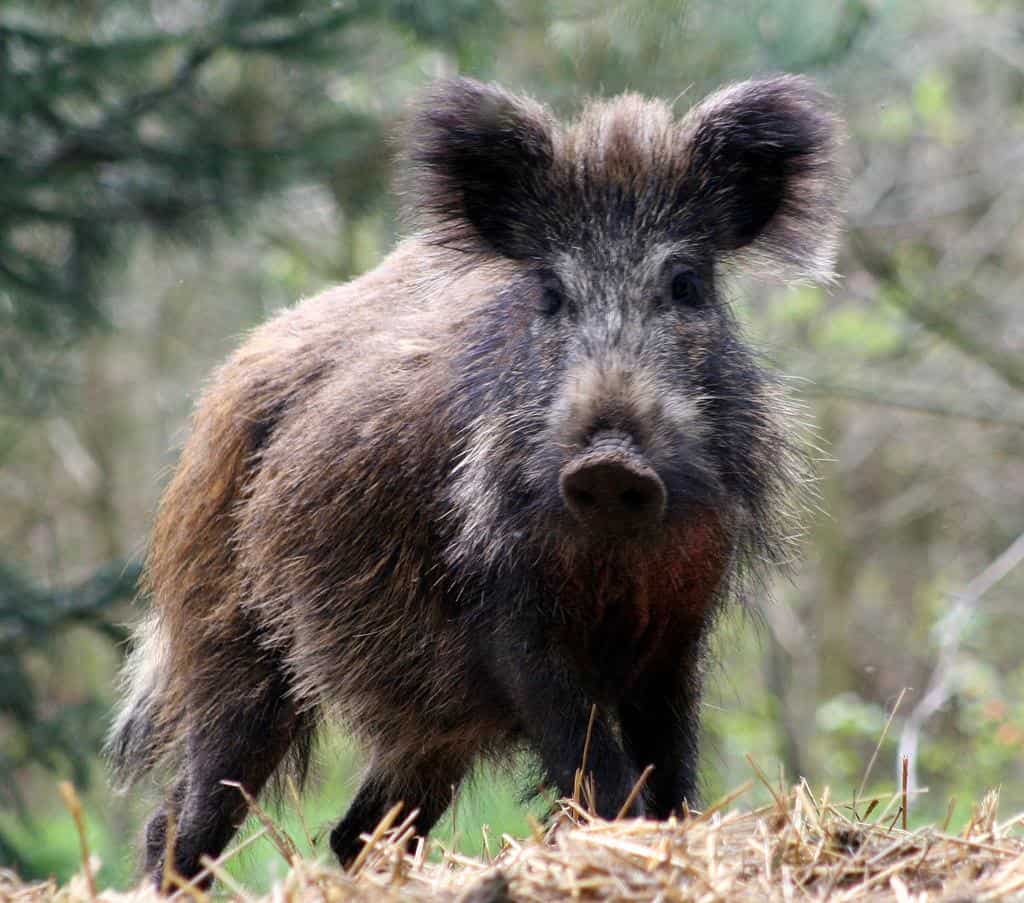
Wild boars and many other animals need water from the Amu Darya River.
Another river running dry in 2024 is the Amu Darya River in Central Asia. Scientists believe this flow decrease is due to climate change and the increased demand for irrigation. However, the river is an essential water source for millions of people in the region, and its depletion could lead to serious consequences.
The Amu Darya River originates in the Pamir Mountains of Tajikistan. It flows through Uzbekistan, Turkmenistan, and Afghanistan before emptying into the Aral Sea. It is the longest river in Central Asia (2400 km) and one of the most critical water sources in the region. Most of this river’s water comes from glaciers high in the Pamir Mountains, as well as from the Tian Shan mountain range.
The Amu Darya River is not the only river in Central Asia facing these problems. The Syr Darya and the Amudarya, two other major rivers in the region, are also running dry for the same reasons.
9. The Yellow River
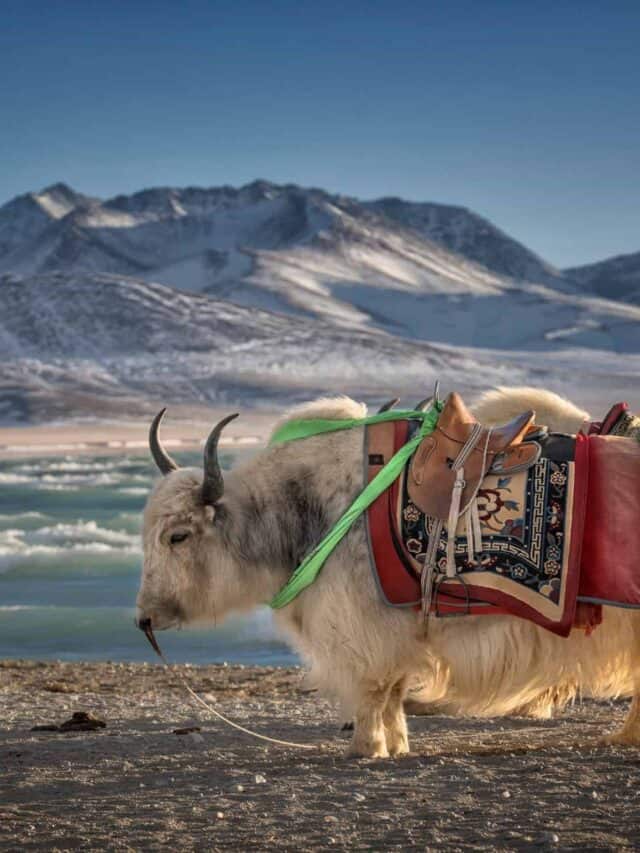
Wild yaks depend on the Yellow River for water.
©Michail_Vorobyev/Shutterstock.com
The Yellow River (“Huang He”) is one of the most important rivers in China. It is the second-longest river in the country, and it is the main water source for agriculture and industry. Unfortunately, the river has been running dry in recent years due to a number of factors. Climate change, overuse of the river’s resources, and pollution are all problems that need better solutions.
The loss of the Yellow River would have a devastating impact. At least 12 percent of China’s population depends on water usage from this river. And it supplies irrigation for over 18 million acres of land.
The causes of the Yellow River’s running dry are complex, but climate change is one of the major contributing factors. The river gets its water from glaciers in the Tibetan Plateau, which are melting at an accelerated rate due to rising temperatures. As a result, glacier melt has led to a decrease in the amount of water flowing into the Yellow River.
Overusing the river’s resources is another major factor in its running dry. The river supplies water for irrigation, industry, and domestic purposes, and there is not enough water to meet these demands. In addition, the river is often dammed for flood control, which further reduces the amount of water available downstream.
Pollution is also a major problem for the Yellow River. Industrial and agricultural waste is dumped into the river, contaminating its waters. This pollution makes it difficult for plants and animals to thrive in the river. It also reduces the amount of water available for humans to use.
10. The Canadian River

Fed from the Ogallala Aquifer, the Canadian River is an important water source in the U.S.
©marekuliasz/Shutterstock.com
With a length of just over 900 miles, the Canadian River is the longest tributary of the Arkansas River. The Canadian River (or South Canadian River) begins in the Texas Panhandle. It runs through New Mexico, Texas, and Oklahoma before emptying into the Arkansas River in Arkansas.
This major river is running dry for several reasons, including drought, water depletion from the Ogallala Aquifer, and climate change. The drought in the southwestern states of the U.S. has been ongoing for several years. Unfortunately, it shows no signs of abating.
The Ogallala Aquifer is a massive water reservoir that spans eight states in the central United States. It is decreasing at an unsustainable rate due to irrigation, which has reduced flows in the Canadian River.
Finally, climate change is causing more evaporation and less precipitation, leading to reduced flows in the Canadian River.
The Canadian River running dry has devastating consequences for the communities that rely on it. In Oklahoma, the Canadian River is a significant water source for cities, agriculture, and industry. The reduced flows in the river have led to water shortages and rationing in Oklahoma City. In addition, farmers in the state have had to reduce their irrigated acreage due to the lack of water.
The Canadian River running dry has also impacted wildlife. Reduced flows have led to lower water levels in lakes and wetlands. These are critical habitats for many fish, birds, and other wildlife.
Summary of 10 Rivers That Are Running Dry in 2024
Here’s a recap of the rivers throughout the world running dry that we took a close look at:
| Number | River | Location |
|---|---|---|
| 1 | The Colorado River | United States |
| 2 | The Rio Grande River | United States |
| 3 | The Indus River | Pakistan |
| 4 | The Teesta River | India, Bangladesh |
| 5 | The Arkansas River | United States |
| 6 | The Red River | United States |
| 7 | The Murray River | Australia |
| 8 | The Amu Darya River | Uzbekistan, Afghanistan, Turkmenistan, Tajikistan |
| 9 | The Yellow River | China |
| 10 | The Canadian River | United States |
The Lasting Impact of Major Rivers Running Dry
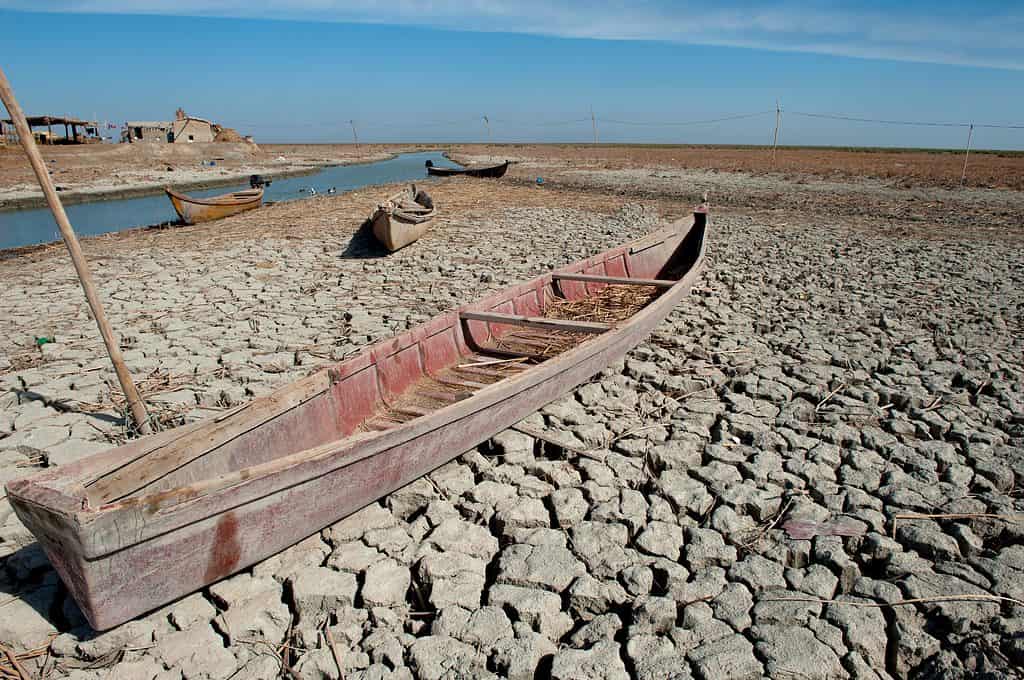
The Euphrates River has been drying up for years with many reasons why being multiple dams, droughts, water policies, and misuse.
©John Wreford/Shutterstock.com
These 10 rivers and more worldwide are at risk of running dry due to climate change and human activity. If measures aren’t taken to protect these rivers, they will all be gone within the next hundred years. The lasting impact of these rivers drying up would include the widespread loss of food crops, hydropower, drinking water, and wildlife.
Measures to limit river water usage might help keep these rivers alive. Still, long-term drought conditions are a significant problem worldwide. Undoubtedly, these rivers need help maintaining their life-supporting water levels and flow for future generations.
Is the Yangtze River Drying Up?
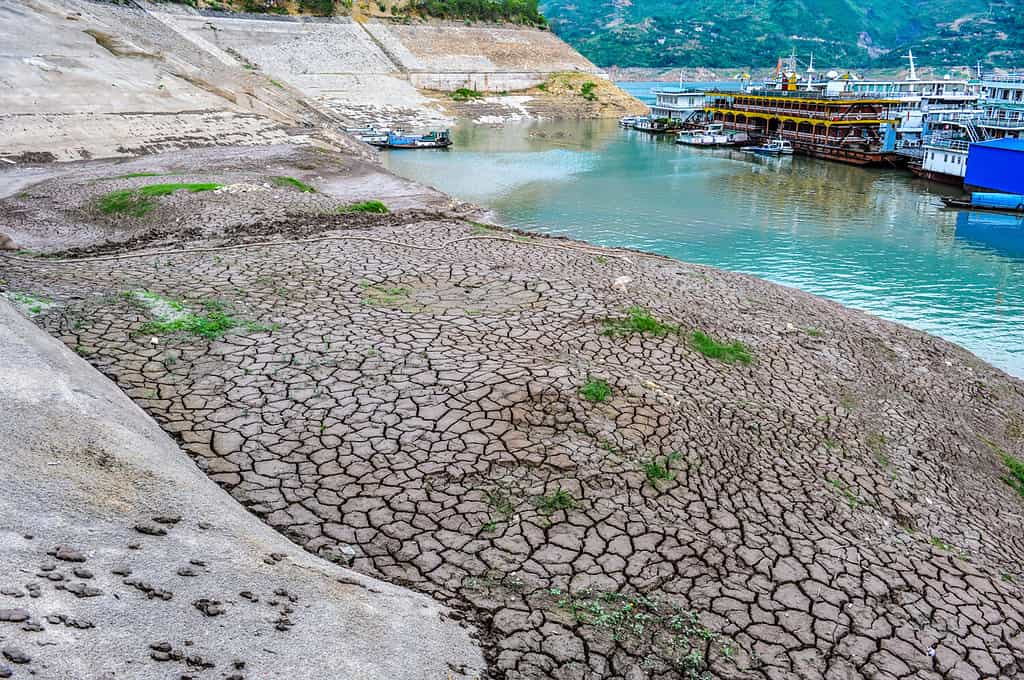
The increased heat and drought have led the Yangtze River to significantly decrease, which has even revealed earlier submerged Buddhist statues.
©xinjian/Shutterstock.com
The Yangtze River is the most important river in China and supplies more than 400 people with water. As a result of a record-breaking drought that occurred in the summer of 2022, as well as extreme weather patterns, pollution, and an increase of damns built, parts of this river are now drying up. The consequence of this is that not only are there limited drinking supplies but the shipping routes and hydropower are severely lessoned.
Due to the rainfall in the area being 45% lower than normal, the Yangtze now has record-level lows, with complete sections and tributaries drying up. Increased heatwaves in the spring of 2023, have caused even further water evaporation.
The photo featured at the top of this post is © CrackerClips Stock Media/Shutterstock.com
FAQs (Frequently Asked Questions)
How historic are river droughts?
A recent study of the Missouri River – which is part of the Mississippi River watershed – found that its conditions between 2000-2010 were the driest in 1,200 years! Needless to say, drought conditions in rivers across the world are truly historic.
Thank you for reading! Have some feedback for us? Contact the AZ Animals editorial team.







